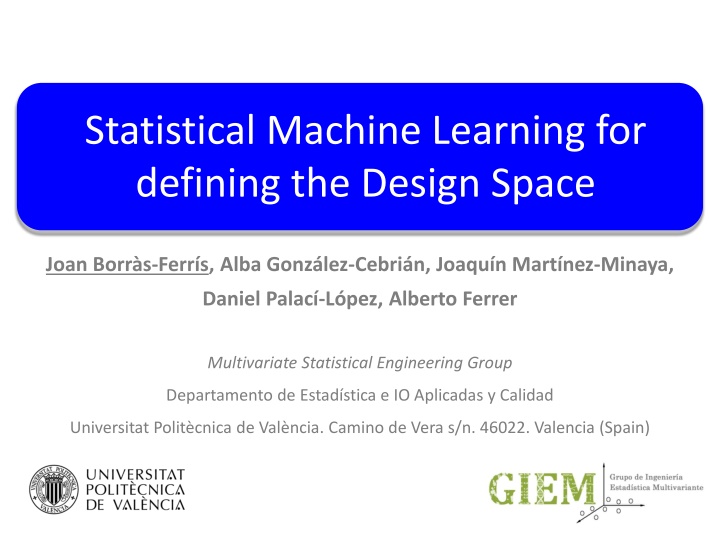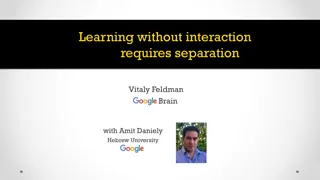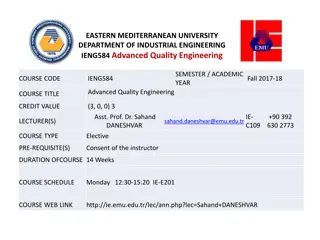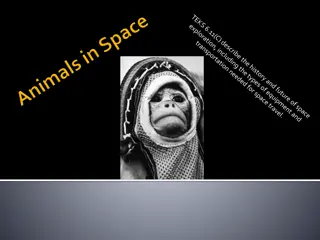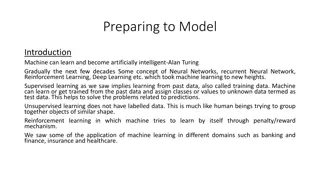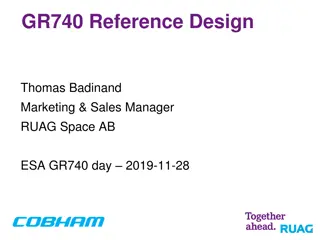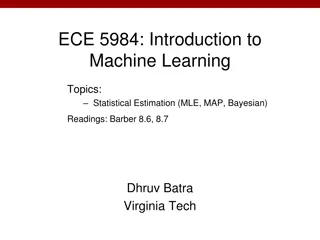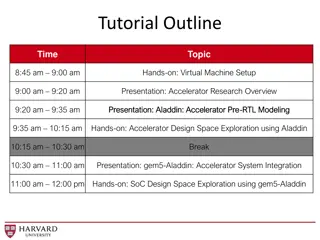Statistical Machine Learning for Defining the Design Space in Quality Engineering
Quality engineering involves the use of statistical machine learning to define the design space, focusing on discovering latent subspaces, defining critical quality attributes, and process variables. The forward and backward approaches are explored through an industrial case study, aiming to optimize quality through data-driven methodologies.
Download Presentation

Please find below an Image/Link to download the presentation.
The content on the website is provided AS IS for your information and personal use only. It may not be sold, licensed, or shared on other websites without obtaining consent from the author.If you encounter any issues during the download, it is possible that the publisher has removed the file from their server.
You are allowed to download the files provided on this website for personal or commercial use, subject to the condition that they are used lawfully. All files are the property of their respective owners.
The content on the website is provided AS IS for your information and personal use only. It may not be sold, licensed, or shared on other websites without obtaining consent from the author.
E N D
Presentation Transcript
Statistical Machine Learning for defining the Design Space Joan Borr s-Ferr s, Alba Gonz lez-Cebri n, Joaqu n Mart nez-Minaya, Daniel Palac -L pez, Alberto Ferrer Multivariate Statistical Engineering Group Departamento de Estad stica e IO Aplicadas y Calidad Universitat Polit cnica de Val ncia. Camino de Vera s/n. 46022. Valencia (Spain)
Contents Motivation Discovering the Latent Subspace Defining the Design Space Forward Approach Backward Approach Industrial Case Study Conclusions 1
Contents Motivation Discovering the Latent Subspace Defining the Design Space Forward Approach Backward Approach Industrial Case Study Conclusions 1
Motivation Quality by Testing Raw material properties Critical Quality Attributes + Process variables 2
Motivation Quality by Design Raw material properties Critical Quality Attributes + Process variables 2
Motivation Forward Quality by Design Backward Raw material properties Critical Quality Attributes + Process variables Process variables Design Space 2
Motivation Forward Quality by Design Backward Raw material properties Critical Quality Attributes ? = ?(?) Process variables 2
Motivation Forward Quality by Design Backward Raw material properties Critical Quality Attributes ? = ?(?) Process variables 2
Motivation Forward Quality by Design Backward Raw material properties Critical Quality Attributes ? = ?(?) Process variables 2
Motivation Forward Quality by Design Backward ? = ? ?(?) Raw material properties Critical Quality Attributes Process variables 2
Motivation In what situations is it possible to generate causal models? First Principles Design of Experiments (DoE) X Y Direct link Z Link through Latent Space Historical (Big) Data (happenstance data) Jaeckle, C. M., & MacGregor, J. F. (1998). AIChE Journal. 3
Contents Motivation Discovering the Latent Subspace Defining the Design Space Forward Approach Backward Approach Industrial Case Study Conclusions 1
Discovering the Latent Subspace ??? = ??? x3 e y1 x2 Partial Least Squares Model x1 t2 t1 In the latent space: The latent variables are orthogonal to each other. The dimensionality of the space is reduced (the information is compressed). Not only models the relationship between X and y, but also provides model for both spaces 5
Contents Motivation Discovering the Latent Subspace Defining the Design Space Forward Approach Backward Approach Industrial Case Study Conclusions 1
Defining the Design Space Forward Approach FORWARD x3 ? = ?(?) y1 x2 - Bayesian linear modelling - Random Forest x1 7
Defining the Design Space Forward Approach Bayesian linear modelling Model building y^ XZ y e MLR 1. Fit MLR model ?,? Compute the Joint Posterior Distribution of the model parameters: ? 2. ??,? Model exploiting ? Given ?????, compute the posterior predictive distribution ? ?????, ??,?,by ????. 3. ? ? Finally, ? ????, ??,?can be computed to meet their specifications: 4. ? ? ? ? ????,??,?= ? ????,??,?? ? ? Bano, G., Facco, P., Bezzo, F., & Barolo, M. (2018). AIChE Journal, 64(7), 2438-2449. 9
Defining the Design Space Forward Approach Random Forest Model building y^ 1. Fit RF model X, Z y e 2. Parametrize the prediction error distribution (check normality) ??, ?? e Model exploiting Given ?????, compute the the RF prediction, ?, and sample NMC* error values from ? ??, ??. 3. ? 4. Calculate the percentage of samples that meet specifications. 8
Defining the Design Space Forward Approach FORWARD ??? ???? Defining the DS e x3 ? = ?(?) y1 x2 - Bayesian linear modelling - Random Forest x1 10
Defining the Design Space Forward Approach FORWARD Defining the DS x3 ? = ?(?) y1 x2 - Bayesian linear modelling - Random Forest x1 t2 t1 10
Defining the Design Space Forward Approach FORWARD ??? ???? Defining the DS x3 ? = ?(?) y1 x2 - Bayesian linear modelling - Random Forest x1 t2 t1 10
Defining the Design Space Forward Approach FORWARD ??? ???? Defining the DS x3 ? = ?(?) y1 x2 - Bayesian linear modelling - Random Forest x1 t2 t1 High Confidence Design Space 10
Defining the Design Space Backward Approach ??? ???? Backward Approach PLS model inversion x3 y1 1 1 A x2 x1 #Y #Y A ????= Q NS t2 t1 Design Space (without uncertainty) Borr s-Ferr s, J., Palac -L pez, D., Duchesne, C., & Ferrer, A. (2022). Chemometrics and Intelligent Laboratory Systems. 11
Defining the Design Space Backward Approach ??? ???? Backward Approach PLS model inversion x3 y1 1 1 A ???? x2 x1 #Y #Y A t2 t1 Design Space (without uncertainty) High Confidence Design Space Borr s-Ferr s, J., Palac -L pez, D., Duchesne, C., & Ferrer, A. (2022). Chemometrics and Intelligent Laboratory Systems. 11
Contents Motivation Discovering the Latent Subspace Defining the Design Space Forward Approach Backward Approach Industrial Case Study Conclusions 1
Industrial Case Study Cereal extraction process: nY = 1 nX = 8 ??? ???? n = 989 n = 989 yDES Z Y y1 Confidence level = 90% 13
Industrial Case Study x3 Discretization in the Original Space x2 x1 15
Industrial Case Study R2: 26.73% Q2: 25.63% PLS model with two components Score plot 14
Industrial Case Study Defining the Design Space PLS inversion Null Space 16
Industrial Case Study Defining the Design Space Random Forest PLS inversion Bayesian LM Null Space Confidence Limit 16
Industrial Case Study Performance of the methods M1 FNR_1 FPR_1 NPV_1 M2 Calibration = 90% FNR_2 FPR_2 NPV_2 N = 983 Validation = 10% FNR: Proportion of truly bad batches that are accepted (Type II risk). FPR: Proportion of truly good batches that are rejected (Type I risk). NPV: Proportion of accepted batches that actually are good. M10 FNR_10 FPR_10 NPV_10 17
Industrial Case Study Performance of the methods M1 FNR_1 FPR_1 NPV_1 M2 FNR_CV FPR_CV NPV_CV Calibration = 90% FNR_2 FPR_2 NPV_2 N = 983 Validation = 10% FNR: Proportion of truly bad batches that are accepted (Type II risk). FPR: Proportion of truly good batches that are rejected (Type I risk). NPV: Proportion of accepted batches that actually are good. M10 FNR_10 FPR_10 NPV_10 17
Industrial Case Study Performance of the methods FNR FPR NPV 18
Contents Motivation Discovering the Latent Subspace Defining the Design Space Forward Approach Backward Approach Industrial Case Study Conclusions 19
Conclusions The DS is a region where critical parameters have been demonstrated to provide assurance of quality and, for that, the uncertainty must be taken into account. Historial data can be used to define the DS with the precaution of respecting the correlation structure from the past. The Bayesian, Random Forest and PLS inversion yield to similar results, but: Bayesian allows calculating rigorously the probabilistic Design space determination (unlike frequentist). Random Forest handles efficiently non-linear relationships. PLS inversion provides the analytical definition of the Design Space. 20
Thanks a lot for your attention! Joan Borr s-Ferr s joaborfe@eio.upv.es The authors would like to express their gratitude to the European Social Fund for the co-finance.
